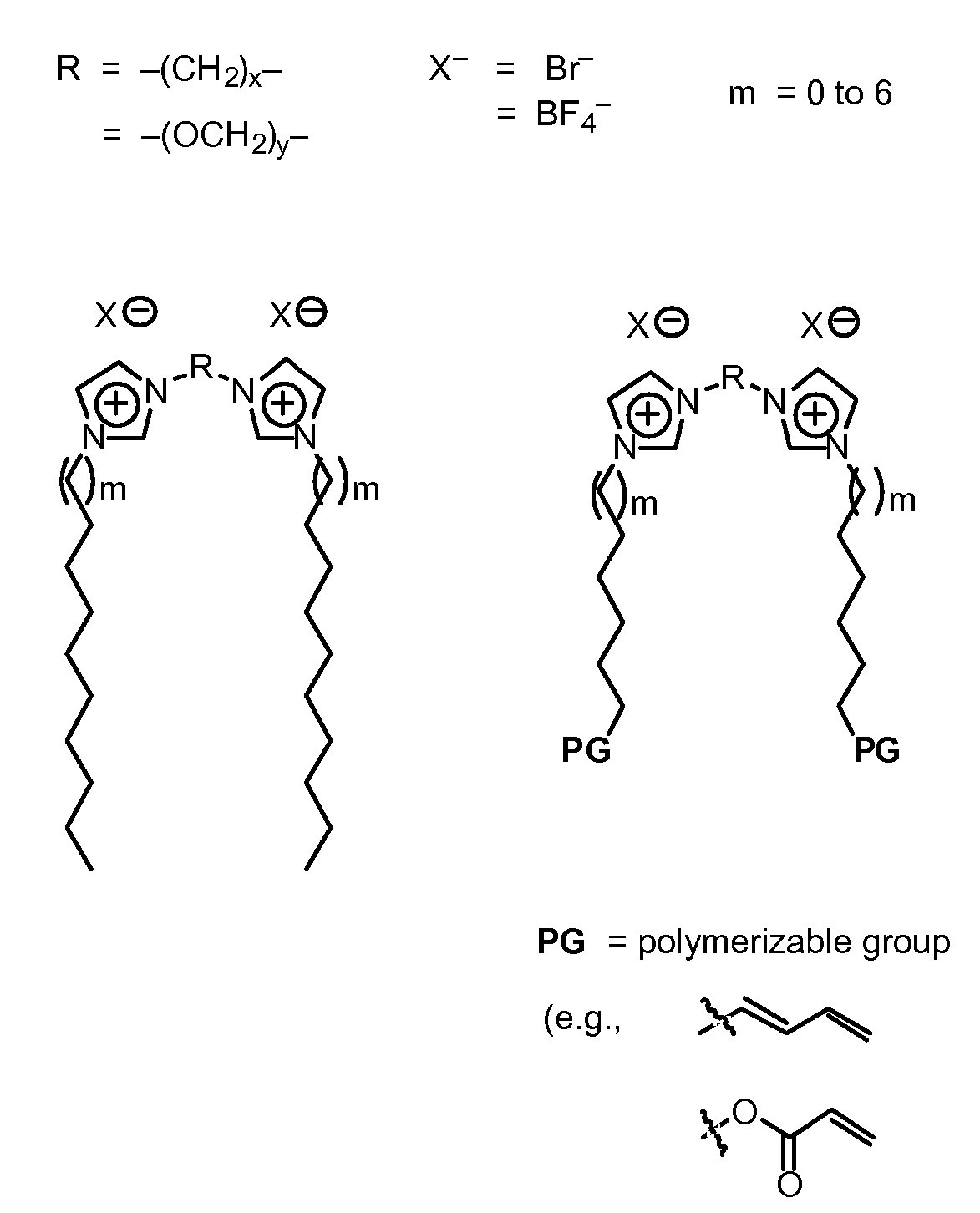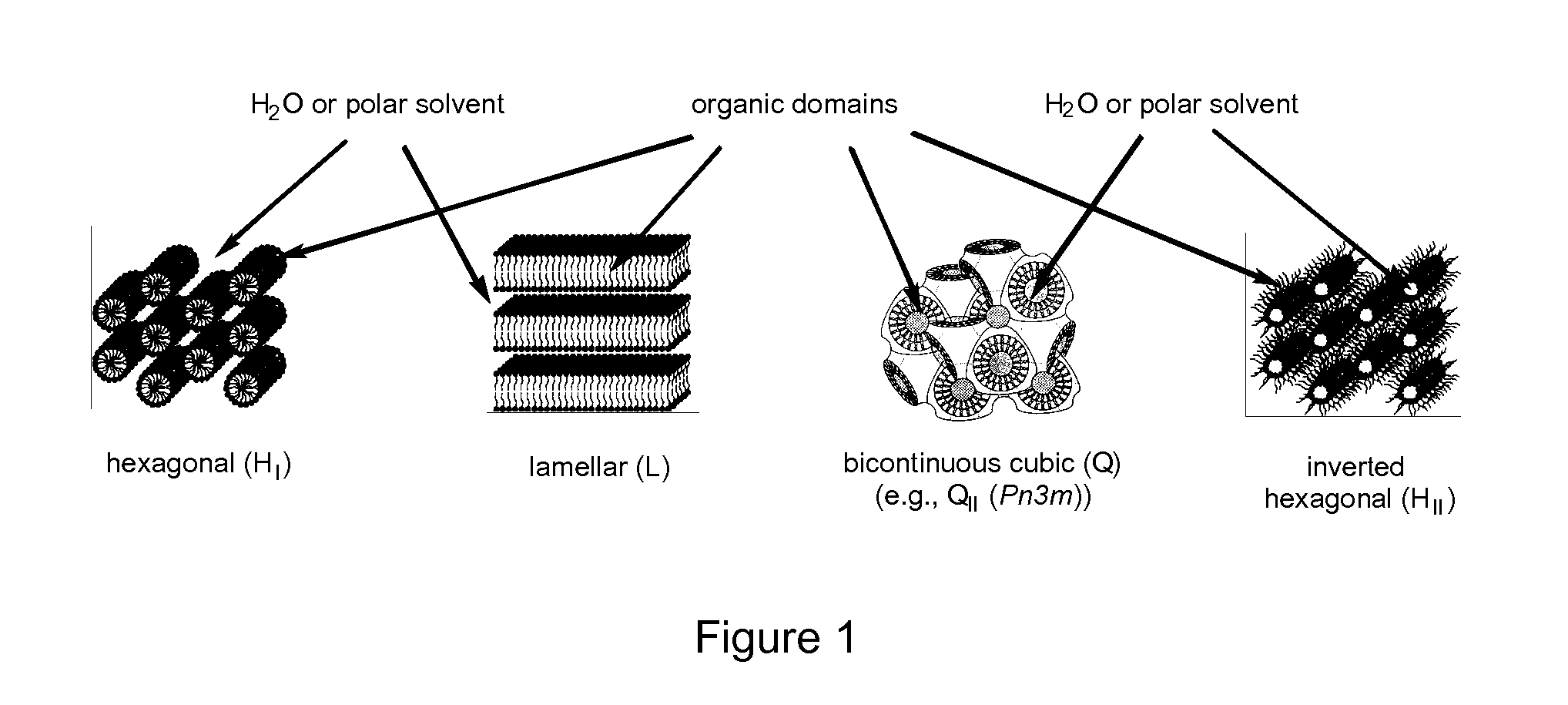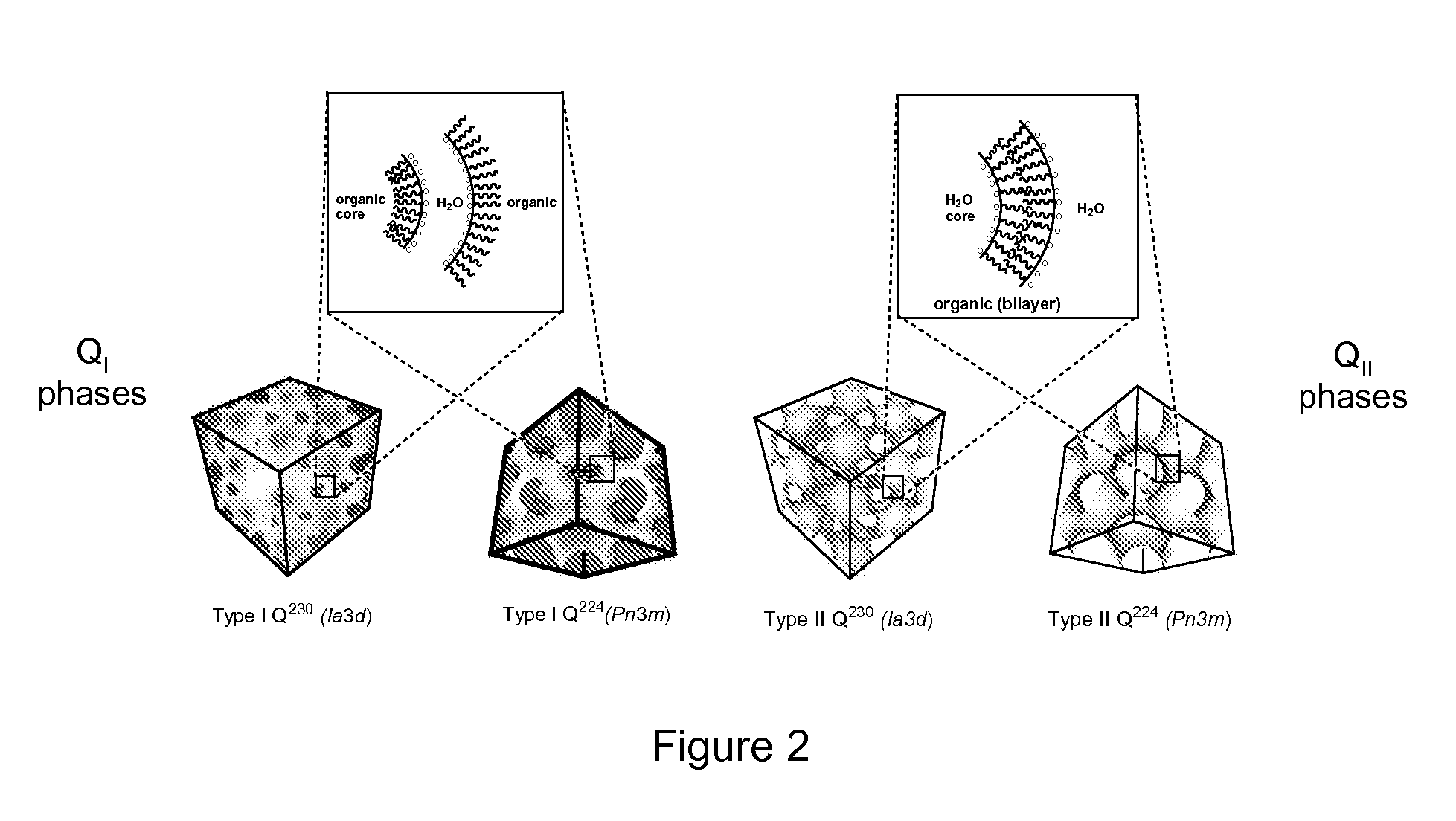Surfactants and polymerizable surfactants based on room-temperature ionic liquids that form lyotropic liquid crystal phases with water and room-temperature ionic liquids
a technology of lyotropic liquid crystal phases and surfactants, applied in the direction of detergent compositions, organic chemistry, membranes, etc., can solve the problem of large amount of polymerizable small molecules, and achieve good interfacial compatibility and llc phase formation
- Summary
- Abstract
- Description
- Claims
- Application Information
AI Technical Summary
Benefits of technology
Problems solved by technology
Method used
Image
Examples
example 1
Synthesis of 1,1′-(1,8-octanediyl)bis-imidazole
[0078]
[0079]Sodium hydride (11.0 g of 60 wt % dispersion in mineral oil, 276 mmol) was added to a 500-mL, 3-neck round bottom flask equipped with stir bar and reflux condenser under argon purge. Anhydrous tetrahydrofuran (300 mL) was vacuum-transferred into the reaction vessel. Imidazole (15.0 g, 221 mmol) was added to the stirred slurry. The reaction was heated to 40° C. and held there until H2 gas evolution had visibly ceased. After this time, 1,8-dibromooctane (20.4 mL, 111 mmol) was injected into the reaction mixture and the reaction heated at reflux (65° C.) under argon overnight. The reaction was allowed to cool to room temperature and the solids were filtered and washed with tetrahydrofuran. The product solution was concentrated by rotary evaporation and then dissolved in methanol (100 mL). Addition of methanol caused residual mineral oil to separate from the product. The methanol solution was washed with hexanes (3×100 mL), and ...
example 2
Synthesis of 1,1′-(1,8-octanediyl)bis[3-[11-hydroxyundecyl]]-imidazolium ditetrafluoroborate
[0081]
[0082]1,1′-(1,8-hexanediyl)bis-imidazole (5.0 g, 20 mmol) and 11-bromo-1-undecanol (10.3 g, 41 mmol) were added to a 250-mL round bottom flask with stir bar. Acetonitrile (125 mL) was added, a reflux condenser was attached and the reaction was stirred at 85° C. overnight. The reaction was stopped and solvent removed by rotary evaporation. Diethyl ether was added to the crude product and the mixture was stirred. Solids were filtered and collected. The dibromide salt was then dissolved in a 250-mL round bottom flask with warm deionized water (125 mL). Sodium tetrafluoroborate (18.0 g, 164 mmol) was added to the solution, which caused a precipitate to form immediately. The flask was placed in a refrigerator overnight. The waxy solids were filtered and washed with deionized water then dried under vacuum overnight. Yield: 11.5 g (74%).
[0083]1H NMR (400 MHz, DMSO-d6): δ=9.692, 7.798, 7.689-7....
example 3
Synthesis of 1,1′-(1,8-octanediyl)bis[3-[11-acryloyloxyundecyl]]-imidazolium ditetrafluoroborate
[0084]
[0085]1,1′-(1,8-octanediyl)bis[3-[11-hydroxyundecyl]]-imidazolium ditetrafluoroborate (10.0 g, 13.1 mmol) was added to a 250-mL air- and water-free Schlenk flask. Anhydrous acetonitrile (100 mL) was added, followed by N,N′-dimethylaniline (8.8 mL, 69 mmol) and 4-dimethylaminopyridine (0.16 g, 1.3 mmol). After addition of acryloyl chloride (2.57 mL, 31.4 mmol) the reaction was heated to 40° C. and stirred under argon overnight. The reaction was cooled to room temperature then poured into 500 mL of 1.2 M hydrochloric acid. The product was extracted with ethyl acetate (3×250 mL) and dried over anhydrous magnesium sulfate. The solids were filtered and the solvents removed by rotary evaporation. The remaining viscous oil was washed with diethyl ether and dried under vacuum lines. The oil became a waxy solid after standing 24 hours at room temperature. Yield=8.5 g (75%).
[0086]1H NMR (400 ...
PUM
| Property | Measurement | Unit |
|---|---|---|
| degree of polymerization | aaaaa | aaaaa |
| degree of polymerization | aaaaa | aaaaa |
| diameter | aaaaa | aaaaa |
Abstract
Description
Claims
Application Information
 Login to View More
Login to View More - R&D
- Intellectual Property
- Life Sciences
- Materials
- Tech Scout
- Unparalleled Data Quality
- Higher Quality Content
- 60% Fewer Hallucinations
Browse by: Latest US Patents, China's latest patents, Technical Efficacy Thesaurus, Application Domain, Technology Topic, Popular Technical Reports.
© 2025 PatSnap. All rights reserved.Legal|Privacy policy|Modern Slavery Act Transparency Statement|Sitemap|About US| Contact US: help@patsnap.com



